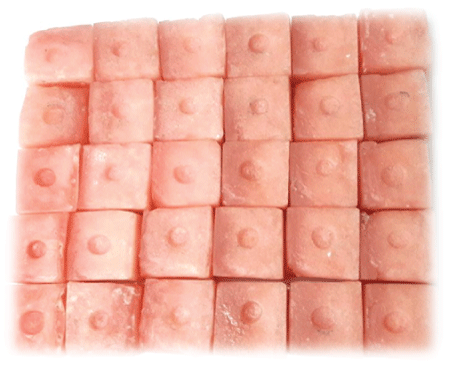
Picture 1: The thirty acrylic blocks with holes to retrain ION-Z GIC.


Sana Lala1* Thuraya Lazkani2
1Department of Removable Prosthodontics, Faculty of Dental Medicine, Damascus University, Syria.*Corresponding author: Sana Lala, MSc student at Department of Removable Prosthodontics, Faculty of Dental Medicine, Damascus University, Syria, Tel: 00963988836656; E-mail: sana.lala@hotmail.com
Background: In restorative dentistry, we usually use Sandwich Technique for posterior restorations where GIC is placed below and a resin composite is placed over it. The bonding strength between these two materials is low. We are looking for the best adhesive system to put in between. We think that the self-etching bond will give the best bonding strength between them whereas the total-etch will give lower bonding strength than the self-etching system.
Objectives: Evaluate and compare the shear bond strength of ION-Z GIC to composite resin, using different generations of bonding systems applied on ION-Z GIC.
Materials and methods: ION-Z GIC (Glass Ionomer Cement modified by Zinc Ions FGM, Brazil) was bonded to resin composite by using two different bonding agents. The thirty specimens used were prepared by using acrylic blocks with holes in each hole to retain the ION-Z GIC. The specimens were randomly divided into three groups:
Group I: Control group.
Group II: Total-etch adhesive was applied and cured over ION-Z GIC.
Group III: Self-etch adhesive was applied and cured.
The composite resin was placed over the ION-Z GIC and cured.
The shear bond strength was measured by shearing the bonded specimens on Universal Testing Machine (Model 114) using the speed of 0.1mm / minute.
The reading was tabulated and subjected to statistical analysis using ANOVA and Tukey’s test.
Results: The test showed a statistically significant difference between Group III and Group I and between Group III and Group II. Group III had the highest shear bonding strength.
Conclusion: Self-etch adhesive agent produces have better shear bond strength to ION-Z than total-etch adhesive and to the group without any bonding agent.
ION-Z GIC; Shear bonding strength; Resin composite; Self-etching bond; Total-etching bond
In modern dental practice, because of the advances in adhesive techniques, an increased focus on the aesthetic qualities of dental restorations and adoption of a minimally invasive dentistry approach, have a great influence on the treatment plan in the posterior and anterior regions [1,2].
Because of posterior composite’s advantages such as single visit and short application time, aesthetics, ability to protect dental tissues during preparation, and is cheaper when compared to indirect methods, it has been generally preferred for back tooth restorations [3]. A lot of negative results are generally based on polymerization shrinkage stress such as poor marginal adaptation, marginal discoloration, white line formation around the restoration, tubercle fractures, microleakage, secondary caries, and postoperative sensitivity in composite resin restorations [4,5]; thus, various attempts have been made to achieve low polymerization shrinkage in restorative materials [6].
Furthermore, glass ionomer cement (GIC) is often used rather than composite resins within the conservative restoration of caries lesions within the posterior region.
The advantages of GIC are having a similar thermal expansion coefficient to natural tooth tissue, physicochemical adhesion to tooth tissues, fluoride release, biocompatibility, low shrinkage, low marginal leakage, anti-caries properties on the restoration edges, and increased remineralization in adjacent proximal caries [7,8]. However, conventional GIC has disadvantages such as low fracture and abrasion resistance, inadequate color stability, moisture sensitivity, and poor aesthetic properties. These disadvantages restrict its use in areas exposed to intensive chewing forces and weaken the physical properties of the restoration [9].
ION-Z GIC is a glass ionomer-based radiopaque self-curing material with bactericidal and dentinogenic active ingredients, with induction of dentinal new formation, for the control of caries. It is indicated for the ART technique mainly due to its bactericidal power, but all the other features work together in leading to this indication: release of fluoride ions, fast-acting, excellent viscosity, high mechanical strength. It is reinforced with zinc has lower shrinkage during curing and excellent hygroscopic expansion: leading to a perfect marginal seal and it frees fluoride ions and acts as a rechargeable reservoir of this ion.
By developing adhesive systems, this disadvantage might be reduced, as they do not require etching and rinse procedure [10]. Self-etching systems combine the functions of adhesive components and primer and don’t need an etch and rinse phase, which decreases clinical application time and reduces technique sensitivity [11]. In addition, the infiltration of the resin occurs simultaneously with the self-etching process, which reduces the risk of a discrepancy between both processes [11]. The self-etch effect should be ascribed to nonrinsing, polymerizable monomers to which one or more carboxylic or phosphate acid groups are grafted [10].
The present study conducted to compare the bond strength between ION-Z GIC and the composite, with different adhesive agents applied on the ION-Z GIC. Statistical significance was defined if P value <0.05.
Evaluate and compare the shear bond strength of ION-Z GIC to composite resin, using different generations of bonding systems applied on ION-Z GIC.
The thirty specimens (sample size) used in this investigation were prepared by using acrylic blocks. A total number of 30 acrylic blocks was prepared using a cuboidal plastic mold. In each block, four wells of 6 mm diameter and 2 mm depth were prepared by drilling holes, to retain the ION-Z GIC (FGM, Joinville, Brazil) (Picture 1).

Picture 1: The thirty acrylic blocks with holes to retrain ION-Z GIC.
With the aid of disposable micro applicators, one drop of the liquid on the walls of the hole was applied for 10 seconds, and then the holes were washed (according to the manufacturer's instructions) (Picture 2).
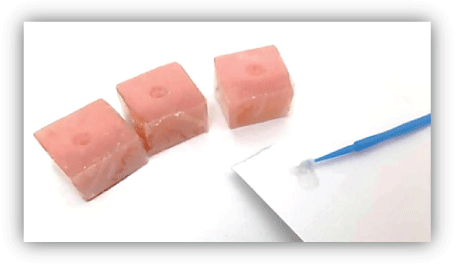
Picture 2: One drop of liquid was applied on the hole’s walls during 10 seconds. (According to the manufacturer's instruction).
The holes were then filled with self-cure ION-ZGIC by mixing it according to the manufacturer’s instructions (one scoop of powder mixed with one drop of liquid) and covering the holes with glass plates to produce a smooth surface. The glass plate was carefully removed to ensure that the glass ionomer surface was smooth and not pitted (Pictures 3-5).
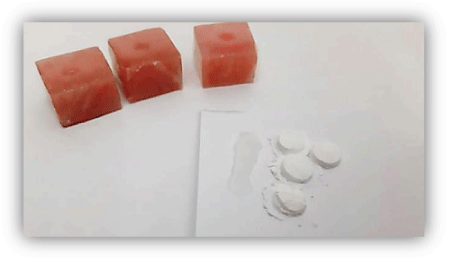
Picture 3: The powder and the liquid were prepared on mixing pad for mixing (one scoop of water with one drop of liquid according to the manufacturer's instruction).
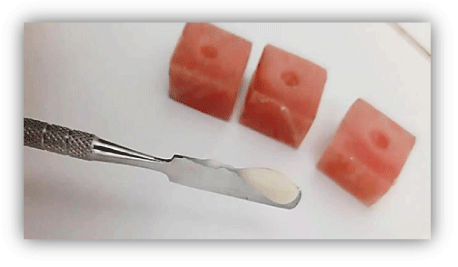
Picture 4: Powder to liquid was mixed in small amounts gradually increasing until total amount. Mixing time was about 30second. (According to the manufacturer's instruction).
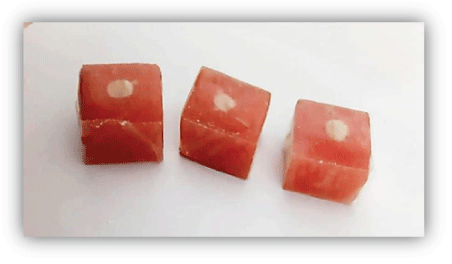
Picture 5: ON-Z GIC was applied in the holes. Then the holes were covered by glass plate to produce a smooth surface.
The specimens were randomly divided into three groups of 10 specimens each. The groups were:
Group I: Acts as a control group, no adhesive agent was applied between the ION-Z GIC and resin composite.
Group II: ION-Z GIC with a thin layer of total-etch adhesive (Dentkist, South Korea, Korea) was applied according to the manufacturer’s instructions and cured, and then a cylinder of composite resin was added and cured over the specimen.
Group III: Same as group II, but a thin layer of self-etch adhesive (Dentkist, South Korea, Korea) was applied and cured over ION-Z GIC (Picture 6).
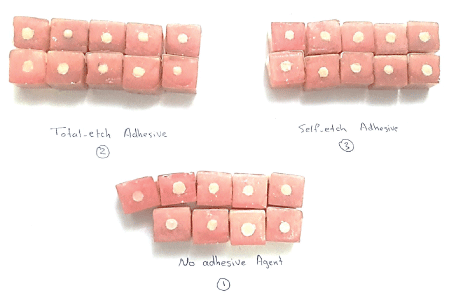
Picture 6: The specimens were randomly divided into three groups of 10 specimens each.
Immediately following this procedure, a transparent plastic ring, 4 mm in height, with a 5 mm internal diameter, was centered over the ION-Z GIC. The composite resin (FGM, Joinville, Brasil) was condensed into a transparent plastic ring, using an incremental curing technique, above the ION-Z GIC substrate, and all sides of the specimen were cured to ensure complete curing of the material. Following the curing, the plastic ring was removed. All the procedures were conducted at room temperature. The specimens weren't stored in any solution before testing (Pictures 7-9).
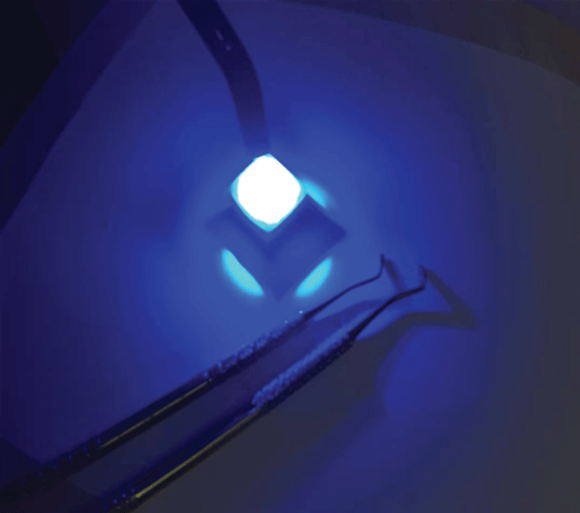
Picture 7: The light-cure was placed and applied for 20 seconds (according to manufacturer's instructions) on both groups (Group II + Group III).
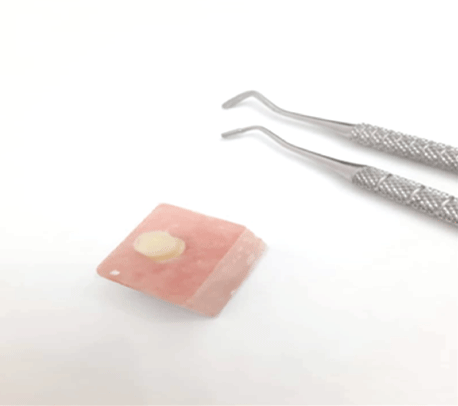
Picture 8: The composite resin was condensed into a transparent plastic ring. (Nano-hybridcomposite).
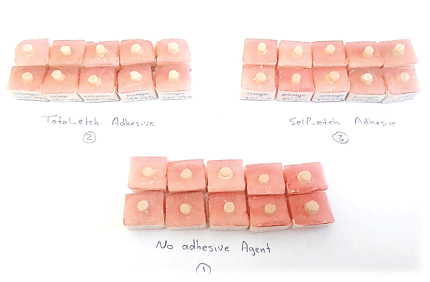
Picture 9: The specimens were ready.
Permission was taken from the faculty of Dentistry to use the shearing measure machine at the Faculty of Mechanical and Electrical Engineering. The shear bond strength was measured by shearing of the bonded specimens on Universal Testing Machine (Model 114) (TesT GmbH, Erkrath, Germany) which was located in the strength materials lab, using the speed of 0.1mm / minute. The shearing apparatus was constructed to grip the acrylic block, and a wedge blade system was designed to apply a shear force on the adhesive interface (Pictures 10,11).
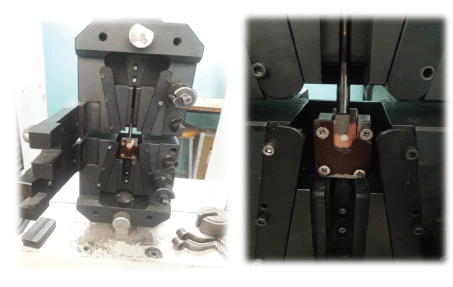
Picture 10: Universal Testing Machine (Model 114), The shearing apparatus was constructed to grip the acrylic block, and a wedge blade system was designed to apply a shear force on the adhesive interface.
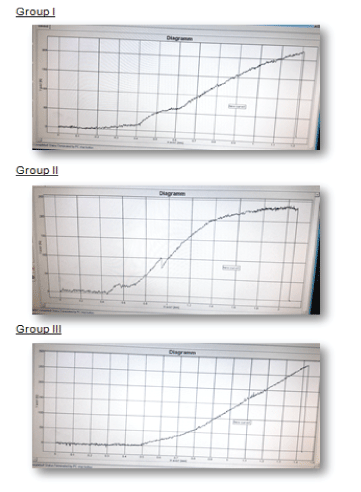
Picture 11: The reading was tabulated and subjected to statistical analysis using Tukey’s test on SPSS 24.
The reading was tabulated and subjected to statistical analysis using Tukey’s test on SPSS 24. Mean and standard deviation were calculated for each group and intergroup comparison was done by the multiple comparison test-Tukey’s test, which revealed a statistical significance among the groups (P<0.05).
Table 1 shows the mean shear bond strengths (MPa) for each group. In group I: the minimum value 5 MPa and maximum value 7.92 MPa. In group II: the minimum value 5.37 MPa and the maximum value 9.32 MPa. In group III: the minimum value 8 MPa and the maximum value 11.47 MPa.
| Group I | Group II | Group III |
| 7.92 | 9.32 | 10.48 |
| 5.24 | 6.8 | 11.47 |
| 5.74 | 5.37 | 10 |
| 5 | 6.47 | 8 |
| 5.84 | 6.43 | 8.08 |
| 6.36 | 6.4 | 8 |
| 6.52 | 7.66 | 8.2 |
| 7.52 | 7.16 | 8.04 |
| 6.14 | 7.17 | 10.14 |
| 5.3 | 6.88 | 9.1 |
Table 1: Multiple comparisons.
Table 2 shows the maximum shear bond strength values for Group III, where the self-etch adhesive was used, with a mean value of 9.151 MPa and a standard deviation of 1.26. On the other hand, the group I recorded minimum shear bond strength, with a mean of 6.158 MPa and a standard deviation of 0.912. Group II with total-etch adhesive recorded a mean shear bond strength of 6.966 Mpa and a standard deviation of 0.976.
| Strength bonding | |||||
| Sum of Squares | Df | Mean Square | F | Sig. | |
| Between Groups | 47.925 | 2 | 23.963 | 19.823 | .000 |
| Within Groups | 32.638 | 27 | 1.209 | ||
| Total | 80.563 | 29 | |||
Table 2: Shows the maximum shear bond strength values for Group III.
Table 3 Shows the intergroup comparison by using the multiple comparison test (Tukey’s test), which revealed a statistically significant difference among the groups. Dependent Variable: strength bonding.
| (I) Bonding System | (J) Bonding System | Mean Difference (I-J) | Std. Error | Sig. | 95% Confidence Interval | ||
| Lower Bound | Upper Bound | ||||||
| Tukey HSD | no bonding | total etching | -.80700- | 0.4917 | 0.246 | -2.0261- | 0.4121 |
| self-etching | -2.99200-* | 0.4917 | 0 | -4.2111- | -1.7729- | ||
| total etching | no bonding | 0.807 | 0.4917 | 0.246 | -.4121- | 2.0261 | |
| self-etching | -2.18500-* | 0.4917 | 0 | -3.4041- | -.9659- | ||
| self-etching | no bonding | 2.99200* | 0.4917 | 0 | 1.7729 | 4.2111 | |
| total etching | 2.18500* | 0.4917 | 0 | 0.9659 | 3.4041 | ||
| LSD | no bonding | total etching | -.80700- | 0.4917 | 0.112 | -1.8159- | 0.2019 |
| self-etching | -2.99200-* | 0.4917 | 0 | -4.0009- | -1.9831- | ||
| total etching | no bonding | 0.807 | 0.4917 | 0.112 | -.2019- | 1.8159 | |
| self-etching | -2.18500-* | 0.4917 | 0 | -3.1939- | -1.1761- | ||
| self-etching | no bonding | 2.99200* | 0.4917 | 0 | 1.9831 | 4.0009 | |
| total etching | 2.18500* | 0.4917 | 0 | 1.1761 | 3.1939 | ||
Table 3: Shows the intergroup comparison by using the multiple comparison tests.
The test showed a statistically significant difference between Group III and Group I.
On the other hand, there is no difference between Group II and Group I.
The result of the study has concluded that a self-etch adhesive agent produces better shear bond strength to ION-Z, which is highly significant as compared to a total-etch adhesive and the group without any bonding agent.
In the literature, there are no clear guidelines about shear force limits, but in fact, adhesives should allow good bonding performance to sustain masticatory forces (5-10MPa). On the other hand, adhesion forces should not be too strong to avoid enamel and dentin loss in case of injury (40-50MPa). Therefore, the ideal biomaterial should have bonding forces included in the interval of 5-50MPa, even if these limits are mostly theoretical [12].
Thus, the proper bond strength between resin composite and ION-Z is necessary for the success of the restoration. Applying selfetch adhesive over ION-Z creates a stronger bond of composite resin to ION-Z compared with total-etch adhesive.
Our study showed that self-etch adhesive has higher shear bond strength between the ION-Z and composite. Similar results were achieved by Kandaswamy D, et al. who reported that the mild self-etch bonding provided higher shear bond strength [13]. Some previous studies showed that using self-etch adhesive with a lower pH (1-0.8) created lower shear bond strength [13,14].
Stronger acid neutralizes more cations, resulting in salt crumps formation. Therefore, the structure of the GIC is weakened and fragile, thus consequently the bond will be weakened [13-15].
This research also found that self-etch adhesives improved the bond between the composite and ION-Z GIC compared with the total-etch adhesive.
A similar result was achieved by Arora V, et al. who reported that the self-etch adhesive caused a stronger shear bond between the composite and RMGIC [16]. Similar result was achieved in a study conducted by Chandak MG, et al. on the same issue [17]. Another study also showed that using self-etch adhesive on the surface of RMGIC had the potential of creating a better bond strength with the resin composite [18]. This might be due to the acidic pH of self-etch adhesive. Etching the surface of GIC with 37% phosphoric acid leads to the dissolution of the lower layers of the GIC matrix and therefore, would decrease the cohesive strength of the GIC which subsequently can affect the bond strength of the composite and GIC adversely [18,19].
From the results of the present study, it can be concluded that the application of self-etch bond agents improves the wettability of ION-Z to adhere to composite resin, thus promoting a strong shear bond between ION-Z and the resin composite.
Download Provisional PDF Here
Article Type: RESEARCH ARTICLE
Citation: Lala S, Lazkani T (2022) Comparison of the Shear Bonding Strength of ION-Z GIC to a Resin Composite Using Different Adhesive Systems: In vitro Study. Int J Dent Oral Health 8(2): dx.doi.org/10.16966/2378-7090.390
Copyright: © 2022 Lala S, et al. This is an open-access article distributed under the terms of the Creative Commons Attribution License, which permits unrestricted use, distribution, and reproduction in any medium, provided the original author and source are credited.
Publication history:
All Sci Forschen Journals are Open Access